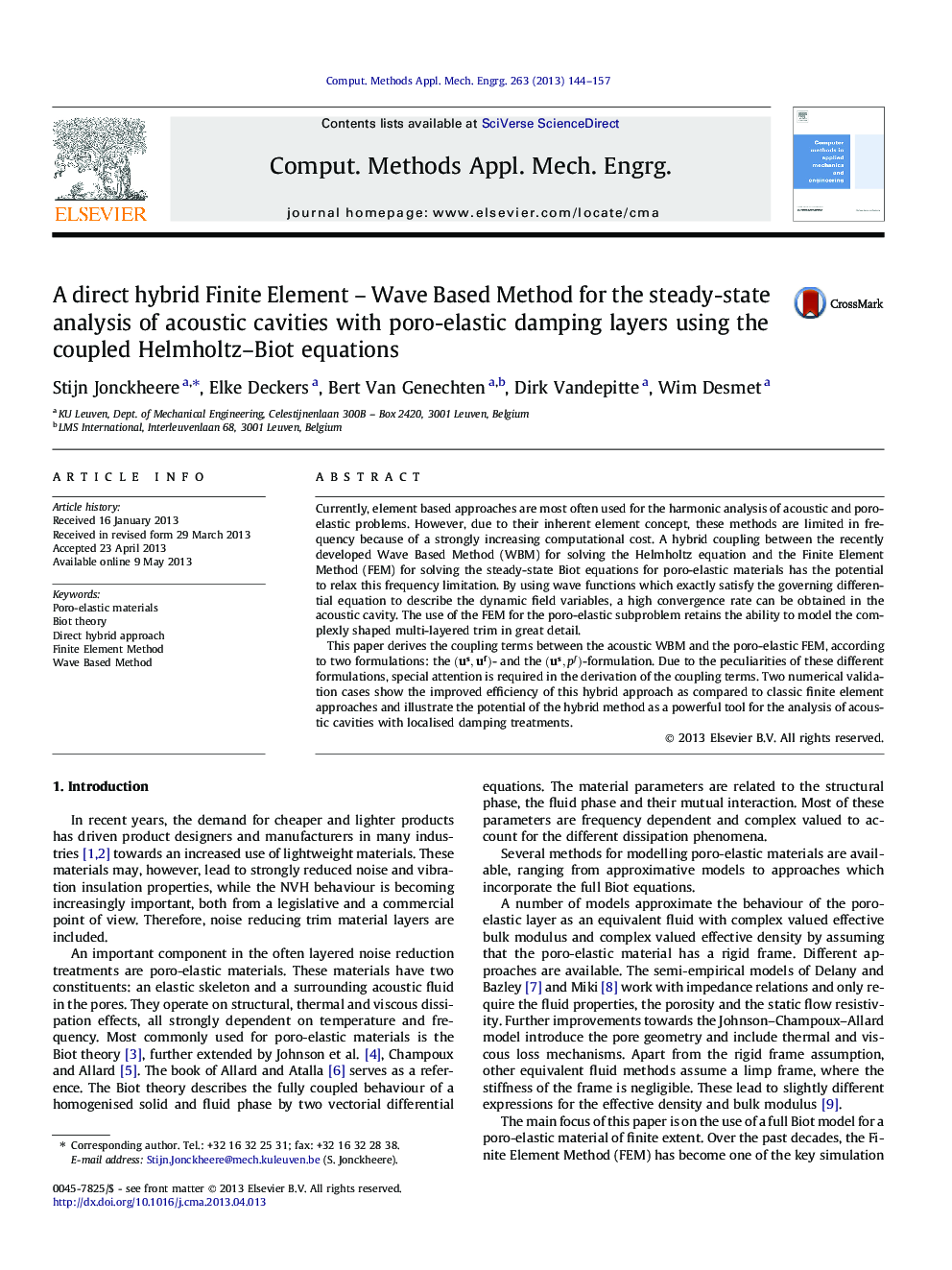| کد مقاله | کد نشریه | سال انتشار | مقاله انگلیسی | نسخه تمام متن |
|---|---|---|---|---|
| 497990 | 862959 | 2013 | 14 صفحه PDF | دانلود رایگان |

• The WBM for 3D acoustics is coupled to the FEM for the poro-elastic Biot equations.
• Both the mixed (us, pf)- and the displacement (us, uf)-formulation are considered.
• The method is validated for three cases with single- and multi-layered trim.
• Both hybrid methods perform up to two orders faster than FEM for the same accuracy.
• The performance of the hybrid (us, pf)- is better than the hybrid (us, uf)-method.
Currently, element based approaches are most often used for the harmonic analysis of acoustic and poro-elastic problems. However, due to their inherent element concept, these methods are limited in frequency because of a strongly increasing computational cost. A hybrid coupling between the recently developed Wave Based Method (WBM) for solving the Helmholtz equation and the Finite Element Method (FEM) for solving the steady-state Biot equations for poro-elastic materials has the potential to relax this frequency limitation. By using wave functions which exactly satisfy the governing differential equation to describe the dynamic field variables, a high convergence rate can be obtained in the acoustic cavity. The use of the FEM for the poro-elastic subproblem retains the ability to model the complexly shaped multi-layered trim in great detail.This paper derives the coupling terms between the acoustic WBM and the poro-elastic FEM, according to two formulations: the (us,uf)(us,uf)- and the (us,pf)(us,pf)-formulation. Due to the peculiarities of these different formulations, special attention is required in the derivation of the coupling terms. Two numerical validation cases show the improved efficiency of this hybrid approach as compared to classic finite element approaches and illustrate the potential of the hybrid method as a powerful tool for the analysis of acoustic cavities with localised damping treatments.
Journal: Computer Methods in Applied Mechanics and Engineering - Volume 263, 15 August 2013, Pages 144–157